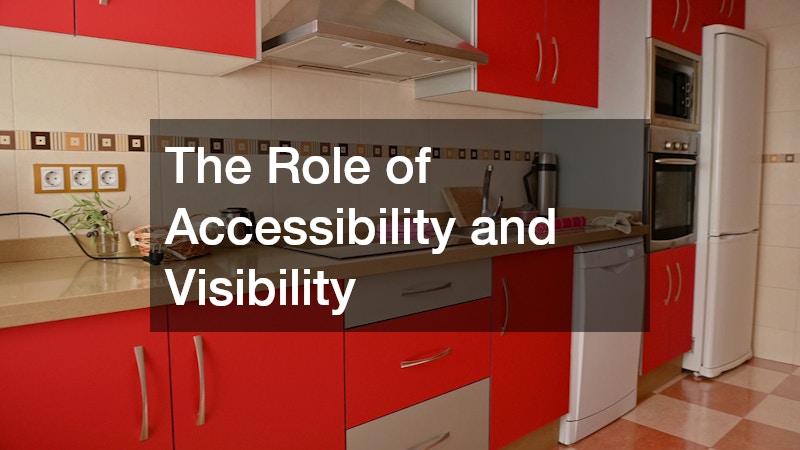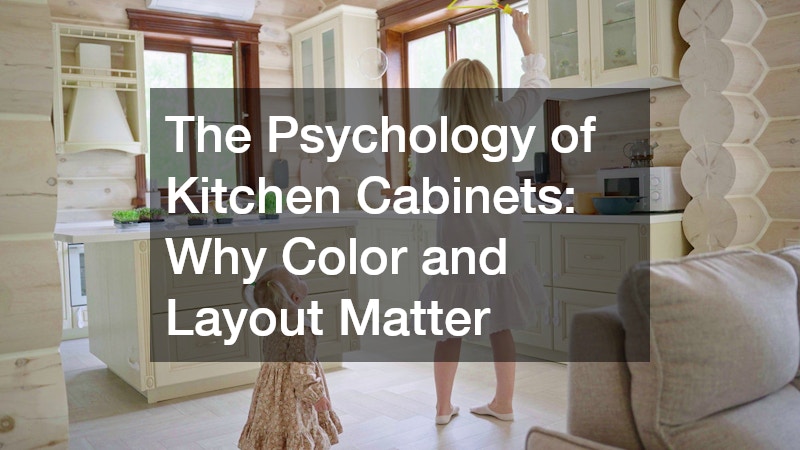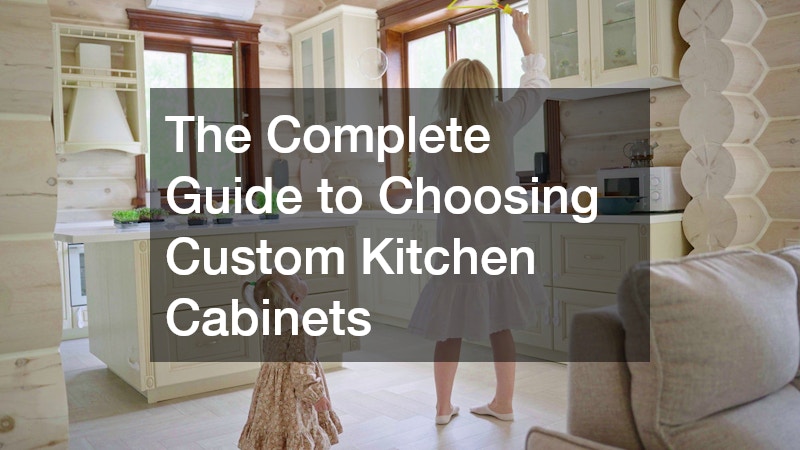The design of a kitchen is more than just an aesthetic choice; it can have profound psychological impacts on its users. The color and layout of kitchen cabinets, two central elements in any kitchen, can influence cooking efficiency, psychological well-being, and the overall satisfaction of everyday life. By delving into the facets of color psychology and layout efficiency, this article aims to uncover how these elements contribute to our daily interactions within the kitchen environment.
How Colors in Kitchen Cabinets Affect Mood and Behavior
The Impact of Color Psychology in Kitchens
Color psychology is a crucial aspect of interior design, as colors can profoundly affect mood and behavior. In kitchen settings, warm colors like reds and yellows are known to stimulate appetite and foster a sense of warmth and energy.
On the other hand, cooler colors such as blues and greens are often employed to create a calming atmosphere, which can promote relaxation and reduce stress levels.
Using color psychology, kitchen designers can deliberately choose cabinet colors to align with the intended mood of the space. For instance, a kitchen meant for lively social gatherings might benefit from sunny yellows or burnt orange cabinets. Conversely, for those who prefer a serene cooking environment, soft pastel blues and greens can create a tranquil setting.
Popular Cabinet Colors and Their Psychological Effects
Neutral colors, such as whites and greys, remain a popular choice for kitchen cabinets due to their versatile nature and ability to evoke clarity and cleanliness. In modern kitchen design, white cabinets can offer a sense of purity and simplicity, often making the space feel larger and more open. Grey, a balance between black and white, can provide a calming yet sophisticated ambience.
Beyond neutrals, bold colors like navy blue and forest green are becoming increasingly popular for those looking to make a statement. Navy blue cabinets can add depth and richness to a kitchen, while a deep green can create a connection to nature and promote tranquility. These colors, while striking, must be used carefully to prevent an overpowering effect in smaller spaces.
The Psychological Benefits of Well-Organized Kitchen Cabinet Layouts
Enhancing Efficiency and Reducing Stress
An organized kitchen cabinet layout plays a crucial role in enhancing efficiency and reducing stress levels. A well-thought-out cabinet design ensures that all necessary tools and ingredients are within easy reach, minimizing unnecessary movements during meal preparation. This streamlined approach not only speeds up culinary tasks but also helps keep the kitchen clean and uncluttered, which can otherwise contribute to a stressful environment.
Disorganization and clutter are known stressors that can negatively impact mental health and well-being. By investing in an organized cabinet layout, homeowners can create a harmonious kitchen space that promotes focus and productivity. This sense of orderliness can lead to a more enjoyable cooking experience and foster a greater sense of accomplishment.
Design Principles for Optimal Functionality
Strategic layout planning is essential to maximizing the functionality of kitchen cabinets. The work triangle concept, which considers the location of the sink, stove, and refrigerator, is a fundamental principle in kitchen design, ensuring efficient movement between these locations. Cabinets should be arranged to complement this workflow, enhancing accessibility with minimal effort.
A successful layout considers not only the placement of cabinets but also what they contain. Grouping similar items together, such as spices, pots, or cutlery, can save time and improve the cooking process efficiency. Well-labeled or transparent storage containers further enhance usability and maintain the organization, allowing for quick access to needed items.
How Cabinet Design Choices Influence Eating Habits
Cues from Color and Organization
The colors and organization of kitchen cabinets can significantly influence eating habits within households. Research has shown that certain colors can act as visual cues, prompting healthier or unhealthier food choices. For example, red, often associated with high energy, can increase appetite and cravings, while green, which is linked to health, can encourage healthier eating choices.
In tandem with color cues, an organized cabinet system guides individuals towards intentional eating habits. Readily accessible healthy snacks or wholefood ingredients displayed at eye level in transparent storage can encourage mindful eating. Conversely, placing less healthy options out of immediate reach can help reduce impulsive snacking, promoting a more balanced diet.
The Role of Accessibility and Visibility
The accessibility and visibility of cabinet contents play a pivotal role in encouraging or deterring specific eating behaviors. Ensuring that healthy, nutritious foods are easily visible and accessible can promote better eating habits. For example, displaying fresh fruits or whole grains in open shelves rather than hiding them in less accessible drawers may nudge individuals towards making healthier choices.
In contrast, making less nutritious snacks less visible and harder to access can help reduce their consumption. This can be achieved by placing such items on higher shelves or in opaque containers. By orchestrating the visibility and accessibility of food items within cabinets, individuals can create an environment that supports positive dietary habits.
The color and layout of kitchen cabinets are far more significant than mere stylistic choices. They have the power to affect mood, enhance functionality, and even influence eating habits, playing a crucial role in our daily interactions with the kitchen environment. Thoughtful consideration of cabinet colors and layouts can lead to a more satisfying and healthy kitchen experience, ultimately enhancing overall well-being.



